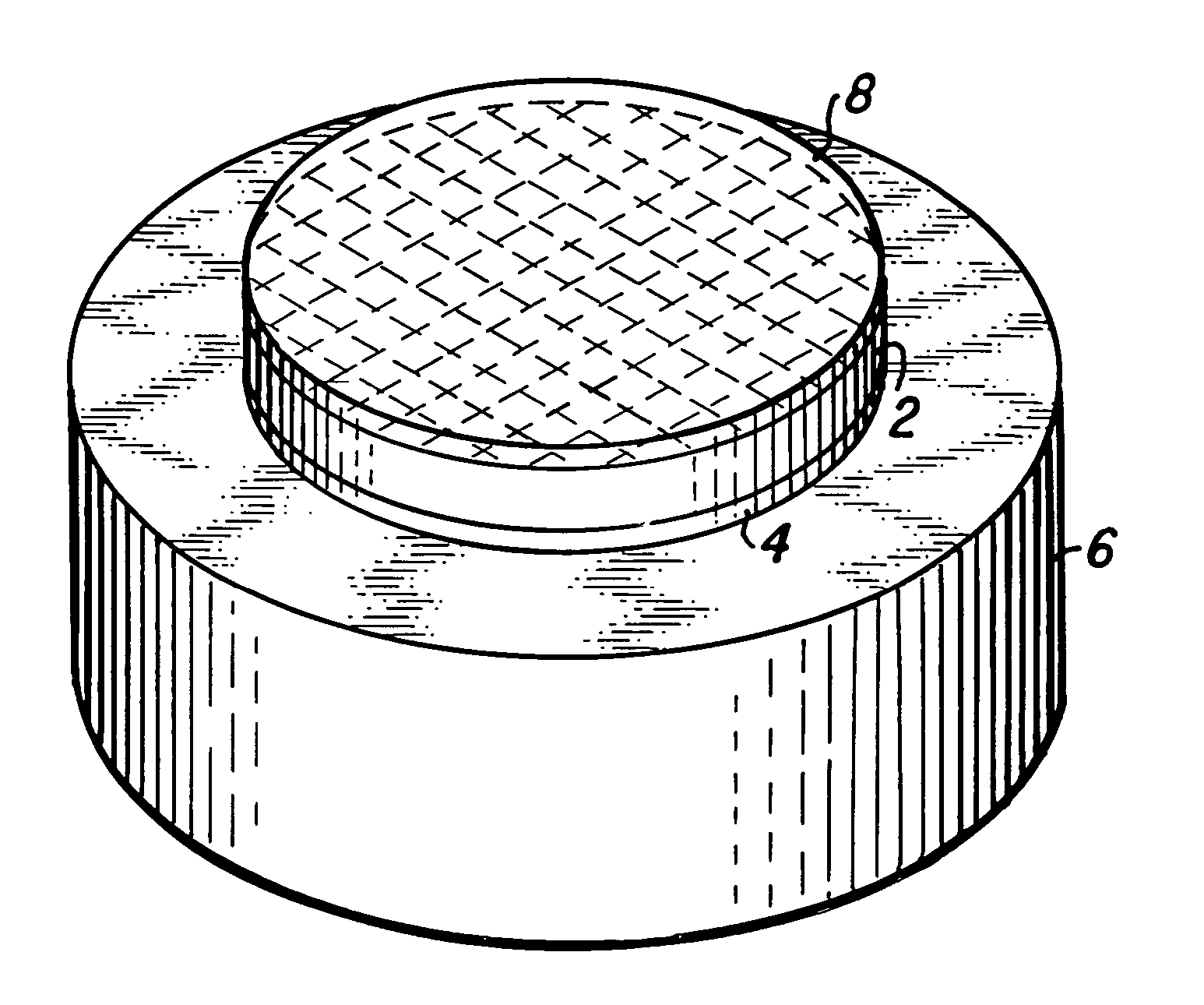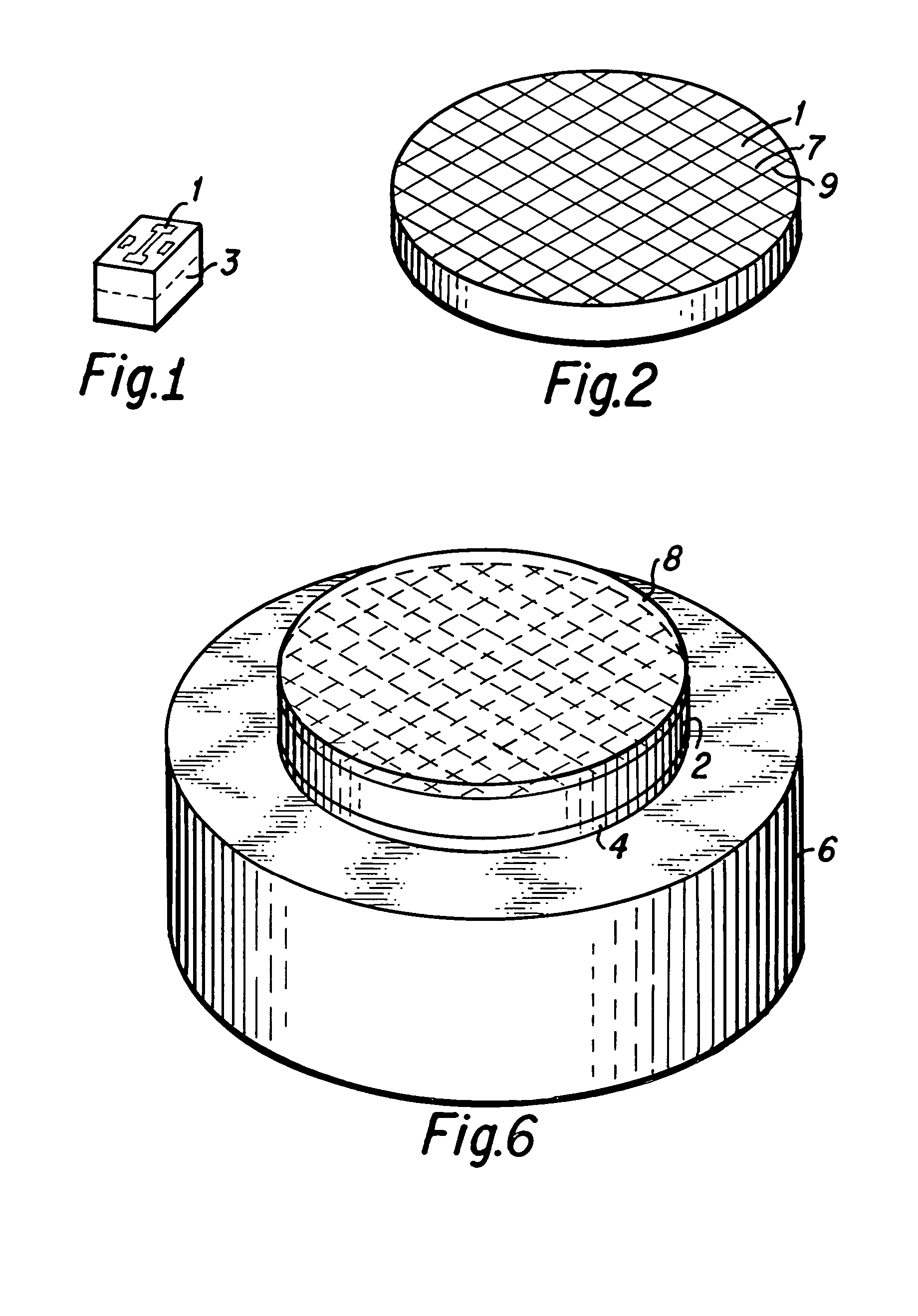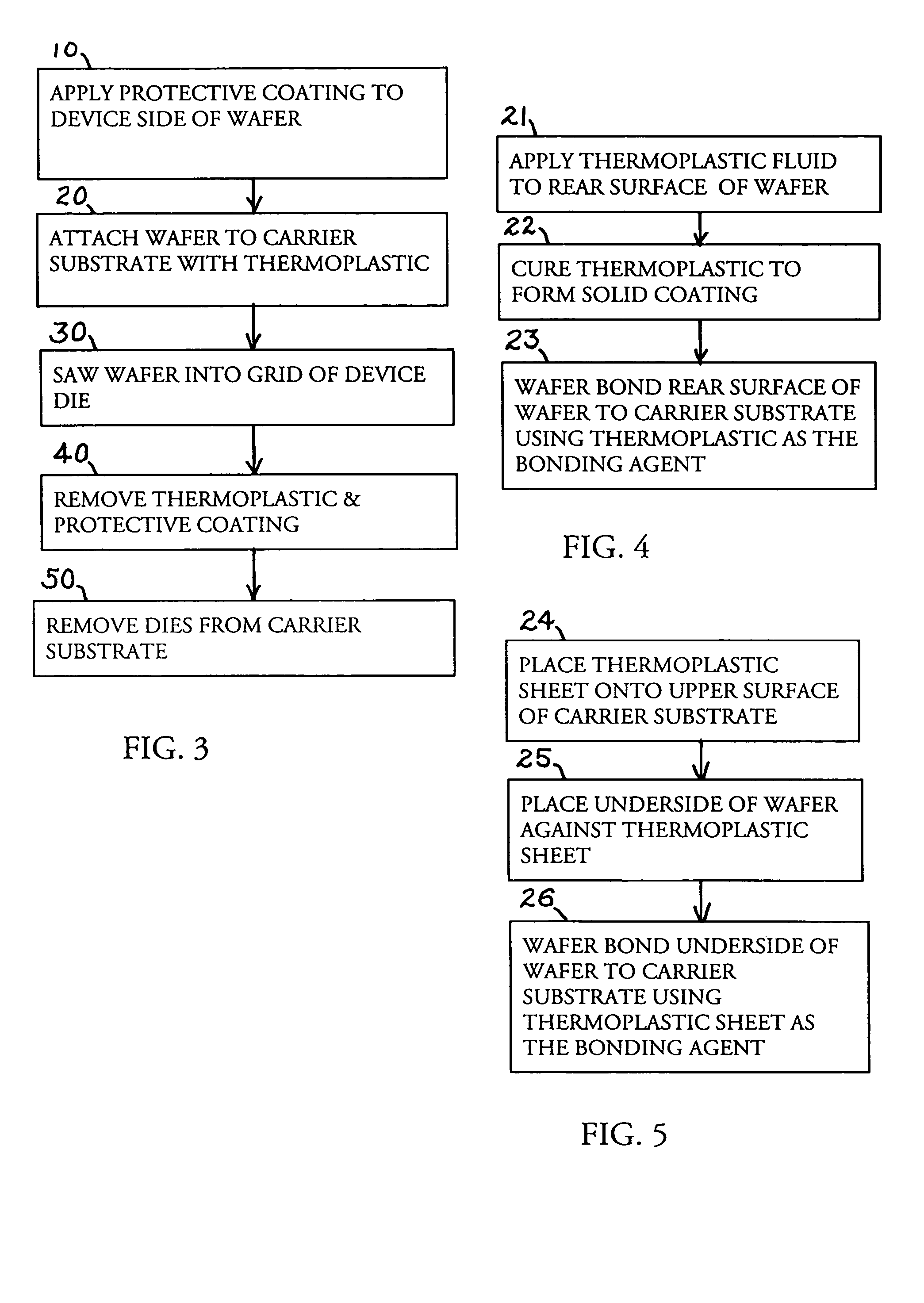Hard substrate wafer sawing process
a technology of hard substrate wafers and sawing processes, which is applied in the direction of basic electric elements, electrical equipment, semiconductor devices, etc., can solve the problems of large area of dies (length by width) in contact with the adhesive surface of tape, sawing procedure appears to have reached a limit, and the rotation blade of the saw also produces vibrations
- Summary
- Abstract
- Description
- Claims
- Application Information
AI Technical Summary
Benefits of technology
Problems solved by technology
Method used
Image
Examples
Embodiment Construction
[0027]Sawing of a semiconductor wafer is accomplished after the wafer has been processed to form a large number of copies of a semiconductor device on the upper surface, such as the semiconductor device 1 pictorially illustrated (not-to-scale) in the die or chip 3 in FIG. 1. As pictorially represented in FIG. 2, those semiconductor devices 1, only one of which is numbered, are typically arranged in a regular grid-like pattern on the surface of the wafer 2, spaced a short distance from one another in rows and columns. That arrangement enables a circular saw to be moved along a series of parallel lines, the saw lines, first in one direction 7, and then in an orthogonal direction 9 thereto to define the small separate square or rectangular shaped regions of wafer real estate, referred to as chips or die.
[0028]Typically, the formed semiconductor devices extend a short distance into the depth of the processed wafer. The remainder of the wafer thickness or height constitutes solely the su...
PUM
 Login to View More
Login to View More Abstract
Description
Claims
Application Information
 Login to View More
Login to View More - R&D
- Intellectual Property
- Life Sciences
- Materials
- Tech Scout
- Unparalleled Data Quality
- Higher Quality Content
- 60% Fewer Hallucinations
Browse by: Latest US Patents, China's latest patents, Technical Efficacy Thesaurus, Application Domain, Technology Topic, Popular Technical Reports.
© 2025 PatSnap. All rights reserved.Legal|Privacy policy|Modern Slavery Act Transparency Statement|Sitemap|About US| Contact US: help@patsnap.com



